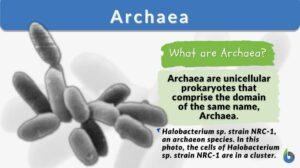Search Results for: lateral surface
Lateral surface
Lateral surface The surface of a part of the body that faces away from the midline. The na recognises a lateral surface on... Read More
Antecubital fossa
Antecubital Fossa Definition The antecubital fossa or the cubital fossa is the triangular-shaped hollow depression between... Read More
Cell membrane
Cell Membrane Definition Just like any non-living body possesses a plastic or paper packaging material that keeps the... Read More
Plant Tissues
Plants are composed of three major organ groups: roots, stems, and leaves. As we know from other areas of biology, these... Read More
Fluid mosaic model
Fluid Mosaic Model Definition What is the fluid mosaic model? The fluid mosaic model is a three-dimensional representation... Read More
Diarthrodial joint
What is a diarthrodial joint? A diarthrosis joint is a freely moving joint characterized by its mobility and joint cavity... Read More
Endomembrane system
Ever wondered how biomolecules are made within the cell and then they are released outside the cell for use by the body?... Read More
Eponychium
The eponychium is the layer present underneath the proximal nail fold that produces cuticles on the nail.... Read More
Tuberositas sacralis
tuberositas sacralis --> sacral tuberosity A rough prominence on the lateral surface of the sacrum posterior to the... Read More
Ethmoidal labyrinth
Definition noun, plural: ethmoidal labyrinths Either of the paired lateral masses of the ethmoid bone, consisting of the... Read More
Condyloid joint
A joint is a point where two bones are attached and are capable of movement. The joints not only provide the movements of... Read More
Anatomical plane
An anatomical plane refers to a hypothetical plane used in describing the location of bodily structures or movement... Read More
Digastric muscle
Digastric Definition The digastric muscle is a paired muscle located under the jaw, consisting of the anterior and... Read More
Lymph nodes
Lymph nodes definition Lymph nodes are small, bean-shaped organs located in different parts of the body and act as... Read More
Angiosperm
Angiosperms Definition What is an angiosperm? An angiosperm is a plant that produces flowers. The angiosperms, also... Read More
Median plane
In anatomy, the median plane refers to a plane passing vertically through the midline. It divides the body into left and... Read More
Peritoneum
What is the Peritoneum? The term peritoneum refers to the serous membrane that constitutes the biologically active inner... Read More
Trapezoid ridge
trapezoid ridge --> trapezoid line The area on the inferior surface of the clavicle near its lateral extremity on which... Read More
Global Carbon Cycling on a Heterogeneous Seafloor
Carbon, nitrogen and oxygen are the fundamental elements of life on Earth. Global carbon varies in amount and its... Read More
Sensory Systems
A sensory system is a part of the nervous system consisting of sensory receptors that receive stimuli from the internal and... Read More
Linea aspera
Linea aspera a rough ridge with two pronounced lips running down the posterior surface of the shaft of the femur; the... Read More
Cuspid tooth
Cuspid tooth --> canine tooth (Science: dentistry) a tooth having a crown of thick conical shape and a long, slightly... Read More
Cytoskeleton
Definition noun plural: cytoskeletons cy·to·skel·e·ton (cell biology) The lattice or internal framework of a cell... Read More
An introduction to Homeostasis
Researched and Written by Jonjo MinnsSubmitted to biologyonline.com on February 25, 2009.Published in biologyonline.com... Read More
Sagittal plane
The sagittal plane is the plane that allows us to see the world in bilateral symmetry. Whether reaching for a high shelf,... Read More




























